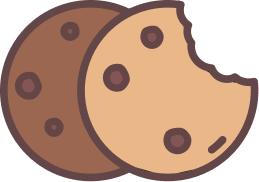#TakeCharge with #Aimshala
How make a career in Textile Artist
A career as a Textile Artist offers a unique opportunity to express creativity through fabric and design, contributing to the arts and culture sector. To embark on this career path, individuals typically need a strong foundation in textile design, fine arts, or a related field. Pursuing a bachelor's degree in textile design or fine arts is essential, followed by potential specialization through master's programs or workshops. Gaining practical experience through internships, exhibitions, or working in textile studios enhances employability. Networking with professionals in the field and staying updated with the latest textile technologies and design trends are also crucial. With a blend of education, experience, and passion for textiles, one can build a rewarding career dedicated to advancing textile arts.
Career in Textile Artist
What are the roles and responsibilities in Textile Artist?
- Creating Textile Designs : Textile Artists conceptualize and create designs for fabrics, considering color, texture, and pattern to produce unique textiles.
- Technical Execution : They utilize various techniques such as weaving, dyeing, and printing to bring their designs to life, ensuring quality and craftsmanship.
- Collaborating with Clients : Textile Artists often work closely with clients to understand their vision and requirements, tailoring designs to meet specific needs.
- Exhibiting Work : They participate in exhibitions and shows to showcase their work, gaining visibility and networking opportunities within the arts community.
- Teaching and Mentoring : Many Textile Artists engage in teaching or mentoring aspiring artists, sharing their skills and knowledge in textile arts.
What education is required to study Textile Artist
Check out the dates of the total number of candidates who have appeared in the CUET 2022 exam from the below table.
Stream |
Graduation |
After Graduation |
After Post Graduation |
|
|
Path 1 |
Completion of high school with a focus on art and design subjects. |
Bachelor of Fine Arts in Textile Design or related fields. |
Master's degree in Textile Design or specialized fields such as Fabric Technology. |
Certifications in specific textile techniques or design software. |
|
Path 2 |
Completion of high school with emphasis on arts and crafts. |
Bachelor's degree in Fine Arts or Fashion Design. |
Master's degree in Fashion/Textile Design or related fields. |
Workshops or courses in specialized textile arts. |

Feeling unsure about
your future?
Let's find the perfect career path for you!
with AI-powered career
guidance

What are the key skills required for Textile Artist
- Creativity - Essential for developing unique and innovative textile designs that stand out in the market.
- Technical Skills - Proficiency in various textile techniques and tools is crucial for executing designs effectively.
- Attention to Detail - Meticulousness in design and production ensures high-quality outcomes and client satisfaction.
- Communication Skills - Effective communication is vital for collaborating with clients and presenting design concepts.
- Project Management Skills - Managing design projects efficiently, including timelines and budgets, is key to successful outcomes in textile arts.
What are the career opportunities in Textile Artist?
- Fashion Designer - Fashion Designers create clothing and accessories, often incorporating textile design into their work.
- Textile Designer - Textile Designers focus on creating patterns and designs specifically for fabrics used in various products.
- Surface Pattern Designer - Surface Pattern Designers specialize in creating patterns for textiles, wallpapers, and other surfaces.
- Costume Designer - Costume Designers create outfits for theatrical productions, films, and television, often utilizing unique textiles.
- Textile Curator - Textile Curators manage collections of textiles in museums or galleries, focusing on preservation and education.
What is the salary and demand for Textile Artist?
- Salary Overview - The typical salary for Textile Artists ranges from $40,000 for entry-level positions to over $80,000 for experienced professionals, with variations based on education and location.
- Regional Salary Variations - Salaries can vary significantly by region; for example, Textile Artists in urban areas with a thriving arts scene may earn more than those in rural settings.
- Current Job Market Demand - The demand for Textile Artists is growing due to an increasing interest in sustainable and unique textile products in the fashion and design industries.
- Future Demand Projections - Future demand for Textile Artists is expected to rise as the fashion industry increasingly values innovation and sustainability.
Leading companies for careers in Textile Artist

Eileen Fisher

Patagonia

TOMS

H&M

Nike

Levi Strauss & Co.

Anthropologie

Cotton Incorporated
What are the best colleges for Textile Artist in India?
Undergraduate
College |
Location |
Website |
|
National Institute of Fashion Technology |
New Delhi |
https://www.nift.ac.in |
|
Pearl Academy |
New Delhi |
https://www.pearlacademy.com |
|
L. S. Raheja School of Art |
Mumbai |
https://www.lsraheja.com |
|
Srishti Institute of Art, Design and Technology |
Bengaluru |
https://www.srishti.ac.in |
|
MIT Institute of Design |
Pune |
https://www.mitid.edu.in |
Postgraduate
College |
Location |
Website |
|
National Institute of Fashion Technology |
New Delhi |
https://www.nift.ac.in |
|
National Institute of Design |
Ahmedabad |
https://www.nid.edu |
|
Indian Institute of Crafts and Design |
Jaipur |
https://www.iicd.ac.in |
|
Srishti Institute of Art, Design and Technology |
Bengaluru |
https://www.srishti.ac.in |
|
Jamia Millia Islamia |
New Delhi |
https://www.jmi.ac.in |
What are the best colleges for Textile Artist in Abroad?
College |
Location |
Website |
|
Central Saint Martins, University of the Arts London |
London, United Kingdom |
https://www.arts.ac.uk/colleges/central-saint-martins |
|
Rhode Island School of Design |
Providence, Rhode Island, USA |
https://www.risd.edu |
|
Fashion Institute of Technology |
New York, New York, USA |
https://www.fitnyc.edu |
|
Royal College of Art |
London, United Kingdom |
https://www.rca.ac.uk |
|
Parsons School of Design |
New York, New York, USA |
https://www.newschool.edu/parsons |
What are the top entrance exams in India for pursuing a career in Textile Artist
College |
Tentative Date |
UG/PG |
Important Elements |
Website |
|
National Institute of Fashion Technology |
January |
Undergraduate |
Creative Ability Test, General Knowledge, and English. |
https://www.nift.ac.in |
|
Pearl Academy |
February |
Undergraduate |
Design Aptitude Test and Interview. |
https://www.pearlacademy.com |
|
National Institute of Design |
March |
Postgraduate |
Design Aptitude Test and Portfolio Review. |
https://www.nid.edu |
|
Srishti Institute of Art, Design and Technology |
April |
Postgraduate |
Creative Portfolio and Interview. |
https://www.srishti.ac.in |
|
Jamia Millia Islamia |
May |
Postgraduate |
Design Aptitude Test and General Knowledge. |
https://www.jmi.ac.in |
Pros & Cons of a Career in Textile Artist
Pros
- Textile Artists have the opportunity to express their creativity and contribute to the arts and culture sector.
- The field offers diverse career paths and the potential for self-employment or freelance work.
- Professionals in this field can influence sustainable practices within the fashion industry.
- The career provides opportunities for continuous learning and collaboration with other artists and designers.
Cons
- The job can be competitive, with many artists vying for the same opportunities.
- Some roles may require irregular hours, especially when meeting deadlines for exhibitions or client projects.
- The income can be inconsistent, particularly for freelance Textile Artists.
- The work can sometimes be isolating, especially for those who work independently.
Did you find this information helpful?


Report
0 out of 0 found this helpful


